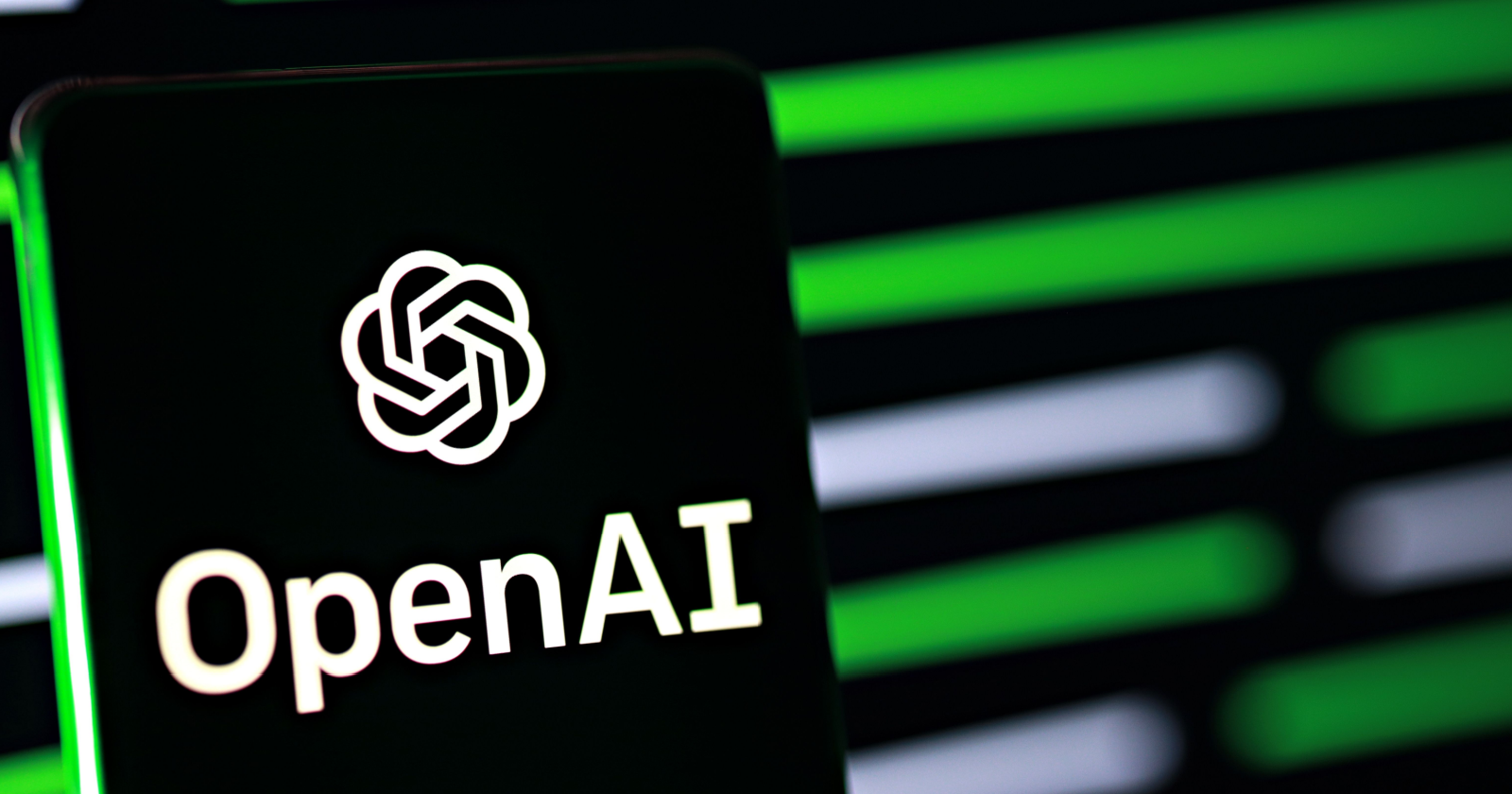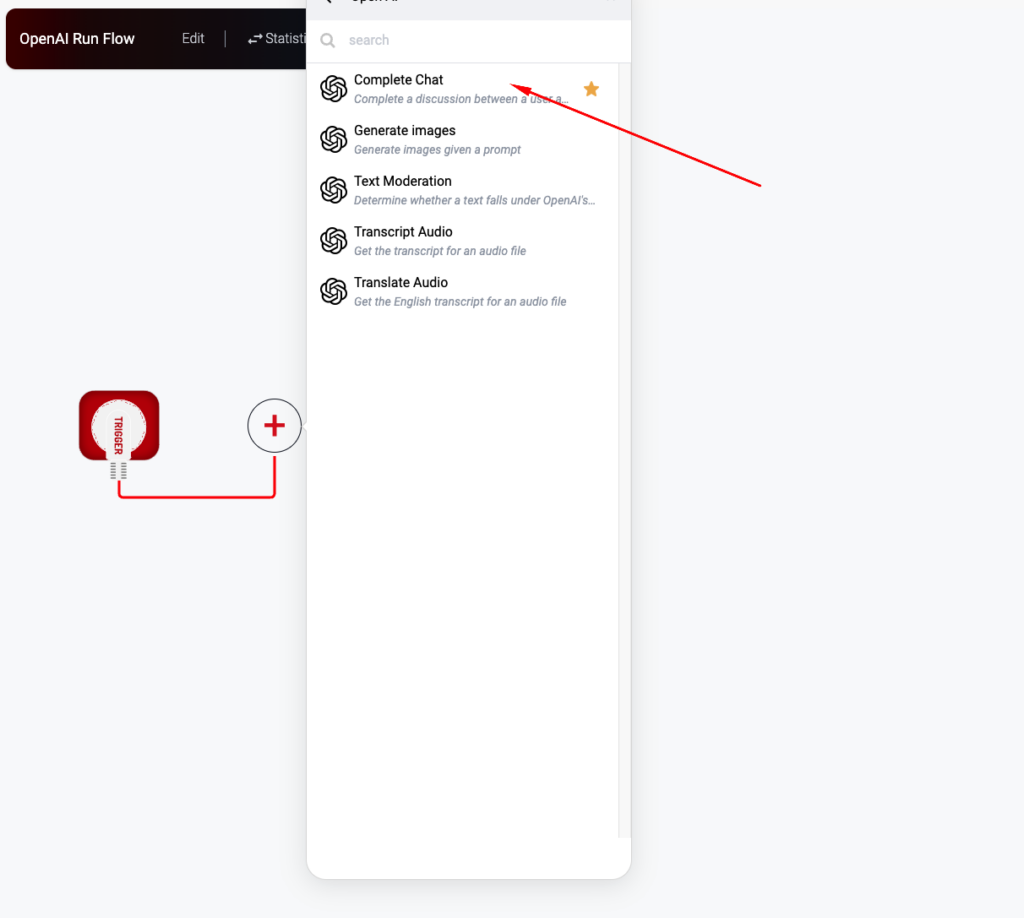
- Enter the API key of your Open AI
- Save it
Let’s run OpenAI on flow

First create a flow
- Define name
- Assign group
- Select Trigger HTTP Trigger
- Save

Select OpenAI

Select Complete Chat

- Select User as Role
- Text is your prompt
- Select your model (GPT3.5 for example, each models have their own price)
- Save
Then run once

As you can see the response is in the step, if you want to us the response you need to use a step with “Step response” see below
Lets create one step Telegram
Click on “send text message”
Select your chatid bot id (if you don’t have connection go to telegram tutorial)

Click on message -> Default value -> @ (@ is used for dynamic value from an input or an output from step) -> Step response 1
Then run

Success run

The message is well send on telegram

You can always imagine other feeds, but WARNING: Chatgpt is an AI model, so the information may be wrong and the results not always stable and regular. We therefore recommend that you use ChatGPT for less critical tasks.
To explore additional complete flows, we encourage you to stick around and check out some of the various use cases we’ve identified below. You might find them quite intriguing!

Unleash the power of AI with OpenAI:
- Complete Chat: Engage in comprehensive, flowing conversations with OpenAI’s advanced language models. Ask questions, make requests, and get the information you need, all through natural language interaction.
- Generate Images: Bring your imagination to life with AI-powered image generation. Describe the scene you envision, and OpenAI will transform your words into stunning visuals.
- Text Moderation: Ensure a safe and respectful online environment with OpenAI’s text moderation tools. Identify and flag potentially harmful content, promoting a positive and inclusive experience for everyone.
- Transcript Audio: Convert spoken word into accurate text with OpenAI’s audio transcription capabilities. Perfect for capturing meetings, interviews, or any other audio content you need to reference later.
- Translate Audio: Break down language barriers and understand audio in any language with OpenAI’s powerful translation engine. Communicate effortlessly and expand your reach globally.

Marketing:
- Personalized Ad Copy Generation: GPT can generate targeted ad copy for different audience segments based on demographics, interests, and past behavior. This personalizes the message and increases engagement and conversion rates.
- Trend Analysis and Content Creation: Analyze social media data and customer reviews to identify trends and topics of interest. Then, GPT can use this information to create relevant and engaging blog posts, articles, or social media content.
- A/B Testing Optimization: Generate variations of landing pages, email subject lines, or other marketing materials. GPT can then analyze performance data to identify the most effective options, optimizing your marketing campaigns.
Sales:
- Chatbot-powered Lead Qualification: Design a chatbot powered by GPT to qualify leads by asking questions and understanding their needs. This frees up sales reps to focus on qualified leads and improves conversion rates.
- Personalized Sales Outreach: Generate personalized email templates or sales scripts based on individual lead information and buying signals. This increases engagement and personalization, improving conversion rates.
- Competitive Analysis: Analyze competitor websites, marketing materials, and social media presence with GPT. Extract key insights and use them to tailor your own sales strategy and messaging.
Accounting:
- Automatic Invoice and Receipt Processing: Train GPT to extract key information from invoices and receipts, automatically populating data into your accounting software. This saves time and reduces manual errors.
- Financial Report Generation: Use GPT to analyze financial data and generate insightful reports, summarizing key trends and identifying potential issues. This improves financial transparency and decision-making.
- Fraud Detection and Risk Management: Analyze transaction data and identify potential fraudulent activities or financial risks using GPT’s anomaly detection capabilities. This strengthens security and safeguards your financial data.
Project Management:
- Meeting Summarization and Action Item Generation: GPT can analyze meeting transcripts and automatically generate summaries and action items, improving team communication and follow-through.
- Project Risk Assessment: Analyze project documentation and identify potential risks using GPT’s natural language processing abilities. This allows for proactive risk mitigation and improved project success.
- Resource Allocation and Scheduling: Analyze team member skills and project requirements to suggest optimal resource allocation and scheduling using GPT’s optimization capabilities. This improves team efficiency and project delivery.
Business Intelligence (BI):
- Data Analysis and Insights Generation: GPT can analyze large datasets from various sources and identify trends, patterns, and correlations. This generates valuable business insights to inform decision-making.
- Customer Segmentation and Targeting: Analyze customer data and segment them into distinct groups based on behavior and preferences. GPT can then be used to create targeted marketing campaigns or product offerings.
- Predictive Analytics: Train GPT on historical data to predict future trends, customer behavior, or business performance. This allows for proactive planning and strategic decision-making.
These are just a few examples, and the specific use cases will vary depending on your specific industry, needs, and goals. However, OpenAI’s potential to analyze data, generate text, and extract insights can be valuable across various departments, leading to increased efficiency, improved decision-making, and overall business success.
If you have any questions please contact us at contact@wiresk.com